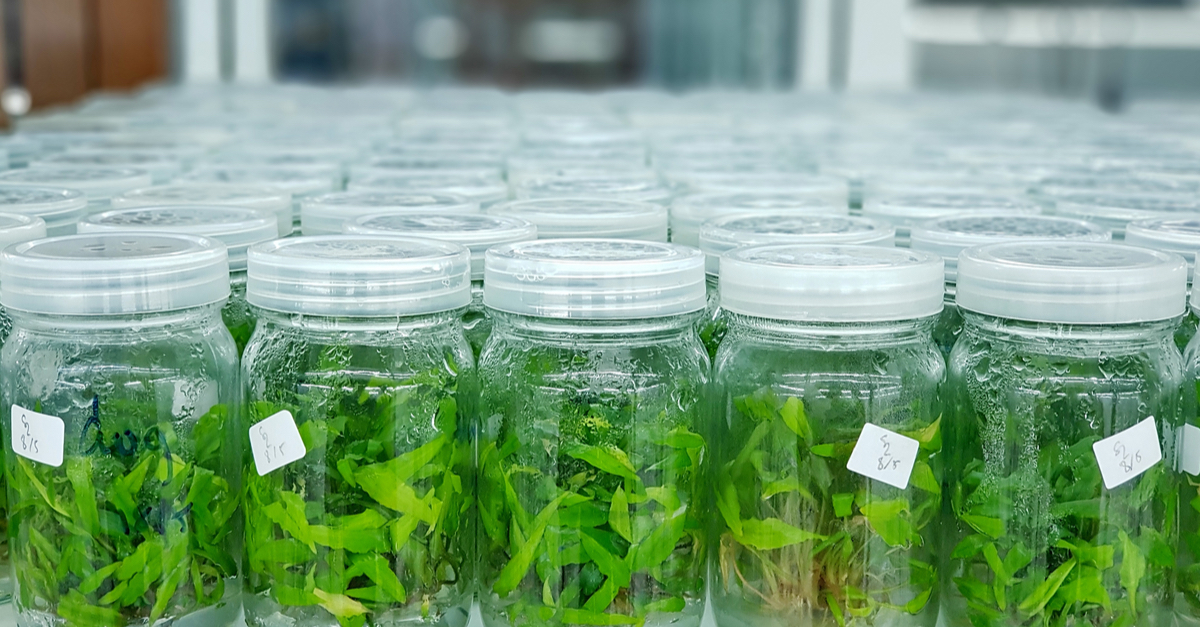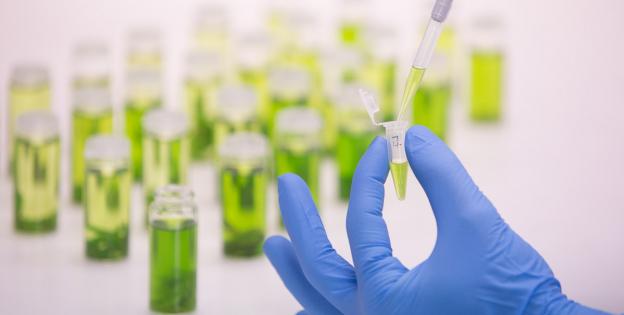- The ever-growing democratisation of cannabis worldwide is favouring the development of innovations in cannabis technology, driven mainly by high tech laboratories.
- Reproducing healthy, virus-free plants is key to preserving cannabis strains across the world.
- This article takes a look at cannabis micropropagation and presents five main applications of the method.

What is micropropagation?
Micropropagation is a method of plant tissue culture that involves growing plants under laboratory conditions in vessels containing nutrient medium. The main advantage of micropropagation is that it allows to produce large amounts of sterile plantlets – free from viruses and infections – in really short time.
Used for producing new plants – often genetically modified – for propagating commercial plants – with or without seeds – and for preserving and propagating rare species, micropropagation allows to obtain an infinite number of plants from a limited amount of tissue at an extremely high multiplication rate.

Plant tissue culture, including micropropagation, can only be carried out in a laboratory equipped with state-of-the-art technology, which needs to be scrupulously clean as working in a sterile environment that is free from viruses and bacteria is essential for a successful result.
Micropropagation depends largely on the hormonal balance of the culture, namely the selected levels of auxins and cytokinins.
Produced in the apical tip, auxins inhibit axillary bud growth while encouraging root development (rizhogenesis). Cytokinins, in turn, are produced in the roots and inhibit root development while promoting axillary bud growth.
Raised auxin levels combined with either low or high cytokinin levels induce stem and leaf formation, while increased cytokinin levels combined with low auxin levels lead to axillary bud growth, which eventually leads to plant propagation.
Balanced levels of auxins and cytokinins, instead, give rise to plant calluses, a mass of unorganised cells resulting from uncontrolled cell proliferation that do not constitute a specific plant tissue or organ.
5 applications of micropropagation
Plant tissue culture has several different applications, including multiplication, meristem culture, doubled haploidy, protoplast isolation and embryo preservation.

Multiplication: Allows large scale proliferation of plants from a cell or tissue fragment. Similar to propagation through cuttings, multiplication uses axillary buds or nodes and induces them to proliferate into plants that are genetically identical to the original plant.
Meristem culture: Meristems are tissues containing undifferentiated cells which give rise to the organs that make up the plant. Meristem culture allows to produce identical copies of the original plant, with the advantage that the resulting individuals are completely virus-free.
Doubled haploidy: Doubled haploidy is employed to produce identical plants from gametes or reproductive cells, which contain a double copy of the genetic information necessary for replication in two homologous chromosomes. During doubled haploidy, cells undergo chromosome doubling and produce pure strains. This is because the genetic information is the same in both chromosomes, which means the resulting plants are homozygotic.
Protoplast isolation: Protoplasts are cells whose cell wall has been removed. These are obtained from explants – pieces of tissue that are generally extracted from the lamina of young leaves – and are fused together for creating new strains, which typically show cytoplasmic inheritance.
Embryo preservation: Embryo preservation refers to the in vitro growth of early embryos. The technique is used to protect the embryos from the development inhibitors present in maternal tissues (in interspecific cross breeding), as well as to accelerate growth cycles.




Comments from our readers
Very interesting subject. Has any research focused on the use of fluid tissue cultures rather than agar, as is being used for other crops?
Hello, we are studying all this deeply, we will do a complete article on tissue culture very soon. Best regards
Read comments in other languages:
Did you like this post?
Your opinion about our seeds is very important to us and can help other users a lot (your email address won't be made public).